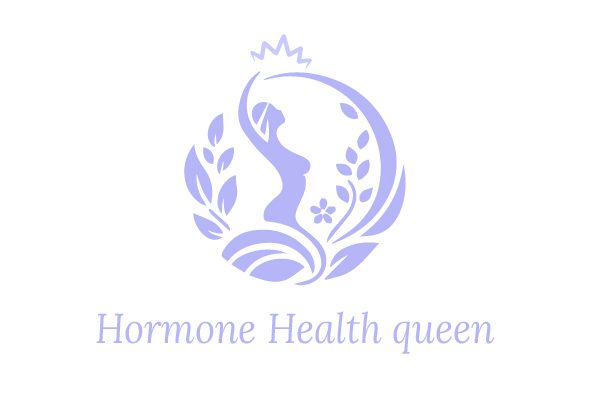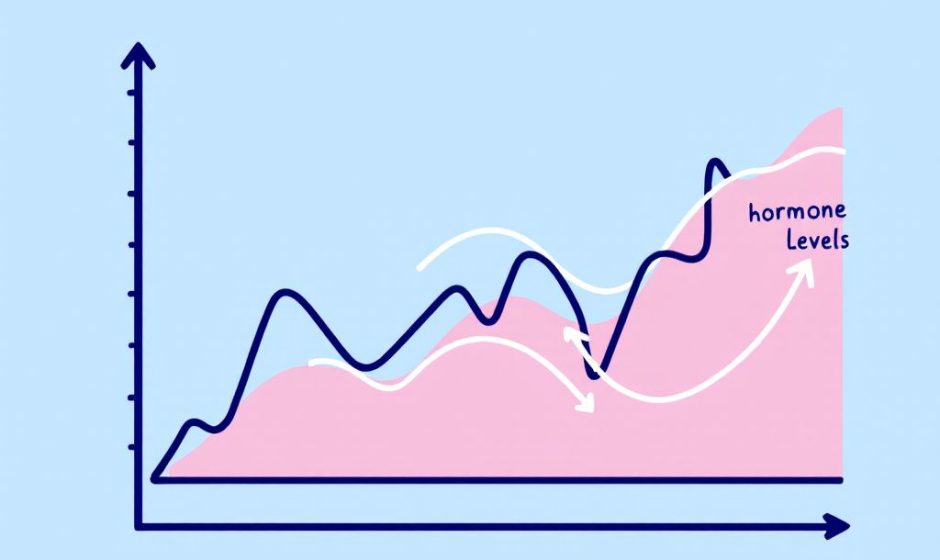So, you’ve landed here possibly because your body’s been sending mixed signals and you suspect hormones might be playing a lead role. Welcome to the club. Hormones are like those mysterious friends who pop in and out of your life, causing chaos and calm in equal measures. They can throw a wrench in your daily routine when they’re out of whack. Trust me, you’re not alone in trying to decode their enigmatic activities. Enter the **hormone chart**––your potential new best friend in navigating this maze.
Why You Should Care About a Hormone Chart
Have you ever felt like your energy seems to plummet without notice, or that lovely acne you thought you outgrew as a teenager pays an unwelcome visit? These, my friend, are often hormone-induced surprises. A hormone chart can show you when and why these instances are more likely to occur, kind of like your body’s diary but with more detail and (hopefully) less embarrassment.
What we’ve got here, essentially, is a map of hormones: when they spike, when they settle, and everything in between. It’s a mix of science, personal discovery, and, sometimes, just plain puzzlement. But that’s the beauty of it.
Deciphering the Basics of What a Hormone Chart Entails
What’s in the Chart, Anyway?
Imagine floating through a pop quiz with cheat sheets. That’s essentially what a hormone chart represents. Usually, it graphs out hormones like estrogen, progesterone, testosterone, thyroxine, cortisol, and insulin, to name a few heavy hitters. Each one dances to its rhythm and plays a distinct role in regulating mood, energy, metabolism, and overall bodily function.
Key Hormones You’ll Bump Into:
- Estrogen: Often associated with the female body but plays a role in male biology too. It’s the mogul of reproduction and menstrual cycle regulation.
- Progesterone: Known as the calm-keeper. Maintains pregnancy and assists in PMS regulation––or at least tries to.
- Testosterone: Drives libido and muscle formation. It’s not just the guys needing this one.
- Cortisol: The stress hormone. Think alarm bells for fight or flight scenarios.
- Insulin: Manages glucose in your blood. It’s essential for energy but can be a monkey wrench at times.
Reading the Chart

Alright, hands up who’s excited about graphs and numbers? Calm down, it’s easier than it sounds. Most hormone charts contain time along one axis and hormone levels on the other. Points or lines represent hormonal changes throughout the day, month, or other cycle periods specific to gender and individual situations.
Fluctuations You Should Be Watching:
- Daily Fluctuations: Cortisol spikes early morning to wake you up. Insulin juggles responsibility depending on meals.
- Monthly Cycles: Here, women experience the classic sawtooth of menstrual changes, defined by peaks in estrogen and progesterone.
- Age-related Shifts: Aging tweaks usual rhythms, like menopause shifting everything a bit off-kilter for women or decreasing testosterones amongst men.
Making Sense of Those Jumbled Lines – Why It Matters
Anyone who’s faced hormonal imbalances knows the havoc they wreak—weight issues, mood swings, low energy. Recognizing these patterns isn’t just fascinating trivia; it’s essential life knowledge. Picture this—you’ve got this chart, these mysterious hormone spikes, and insight to tackle your lifestyle woes. Kind of like seeing the future.
So, What’s in It for You?
The real magic begins as you align lifestyle decisions with your personal hormonal matrix. This isn’t a one-size-fits-all deal. Here’s how digging into your hormone chart might turn your life into a well-oiled machine, instead of the sputtering mess it’s felt like lately.
- Diet Adjustments: Realizing your cortisol spikes when you’ve indulged in your latest coffee binge? It might be time to pace it out.
- Exercise Tweaks: Low energy? Check testosterone and estrogen levels. It affects your muscle-to-energy ratio, especially during workouts.
- Sleep Scheduling: Identifying vicious cycles of sleeplessness? Perhaps your friend cortisol had a hand in that.
A hormone imbalance is sometimes the road map to inefficiency or that lurking burnout feeling. Meticulously following your hormone chart can lead to adjustments before these anomalies run you down.

Let’s Dive Into Hormone Monitoring – It’s Not as Scary as You Think
Starting Your Hormone Journey
Embarking on this path might feel a tad daunting. First things first, you’ll want to get comprehensive testing. Lab results may guide you to an appropriate chart.
Practical Steps to Get Started:
- See a Specialist: Start off with good ground information by speaking to an endocrinologist or a healthcare provider who can interpret hormonal tests accurately.
- Use Available Tech: Apps and monitoring devices are pulling the data labor for you. Track, compare, analyze—rinse and repeat with efficiency.
- Daily Journaling: Incorporating hormone tracking with daily activities and symptoms can reveal correlations. Like journaling, but for your body’s narrative—not as “dear diary,” but more “dear physiology.”
Quick Sketch of Apps You Might Love:
- Apps like Flo or Clue for menstrual tracking; MyFitnessPal or NutraCheck are intuitive platforms for diet management. They categorize hormone inputs and changes similarly true-to-life cycles.
Reading into The Data:

Patterns you detect might emerge across tests, not just the immediate day-to-day. Keep the long game in perspective while living in turmeric latte date circles. Whoops, my bad—forgot, we’re discussing real hormone shifts here, aren’t we.
Implementing Changes – Making Your Hormone Chart Work
Personalized Approach to Health Adjustments
Going beyond tracking, it’s proactive engagement. Lightbulb moment: realizing lifestyle tweaks bring balance. Let’s chat changes, focused fun or necessary steering a specific direction, inspired directly from your hormonal tales.
- Diet Tweaks: A current chart indicating erratic insulin leads you directly into an exploration of refined sugar avoidance. Goodbye sugar, hello cozy, predictable glucose levels.
- Exercise Regimens: Peak cortisol equals adjusting subtle to high intensity workouts. Optimize exercise routines to avoid potential adrenal fatigue or general misfire.
- Pass on Screen Binging: Light exposure exploits melatonin levels at night. If you’re reading charts on a tablet, remember, reducing light at night can tug daytime melatonin levels into calmer proportions.
Real-life Chronicles – One Example After Another
Okay, let me hit you with relatable tales. Enter Julie, a working mom, versed in hidden hormone triggers. Her sleep and energy depleted universally during specific monthly dates. Reviewing her chart, Julie deciphered and synced tasks or decluttered invigorating activities within observed casings of strength and mental focus; pit stops related during ‘shark week’ peril couldn’t tank her efforts entirely.
Or Larry, powered routes boosting later afternoon testosterone when resistance training—a dialed approach. Tranquility found within structured weekly cadence amongst hectic schedules.
Closing Thoughts – Fold It In: Become Your Body’s Detective
Here’s your reward for sticking through: simple changes based on impactful hormone chart insights enrich wellbeing like treasures. Adjust, fixate and pivot steering targets through observing, not anxiety-inducing abnormalities. Accept the guiding facets your hormone chart embodies rather than filing its pages into abeyance.
So, back to you. Feel the surge of engaged inquiry seated at the helm, aid embraced by now fathomed trends and simple leverage. Wrapped misgivings translate dissipated tension through calendared insights into emboldened strides amid burgeoning keenness specifics uncover.
What’s more honest sharing amongst geared motives engaging physiology’s riddles ignites unparalleled life assertiveness potential. Timid no more; conception-realized hormone reveries launching material assertions heading practical triumphs. Understand your personal narrative a timeline morphing rebirthed, new lenses crafted—hat tips from erstwhile curiosity… always family.
Frequently Asked Questions
What are the benefits of using a hair mask in my hair care routine?
Using a hair mask can provide several benefits, including hydration, smoothing, strengthening, curl definition, heat protection, and damage repair. Hair masks infuse the hair with moisture, help coat the hair shaft to seal split ends, reduce breakage, and protect the hair from heat styling and environmental damage[1][4].
What ingredients should I look for in a hair mask?
Effective hair masks often include ingredients such as coconut oil, argan oil, shea butter, honey, avocado oil, green tea, and coconut water. These ingredients provide nourishment, moisturize, and protect the hair, offering benefits like softening, moisturizing, and protecting against damage[2][5].
How often should I use a hair mask in my routine?
You should use a hair mask whenever your hair feels dry, unmanageable, or in need of intense hydration. This can vary depending on your hair type and needs, but generally, using a hair mask once or twice a week can help maintain healthy and moisturized hair[1][4].
How do I apply a hair mask for the best results?
To apply a hair mask effectively, shampoo your hair first, then apply the mask, focusing especially on the ends where hair tends to be the most damaged. Leave the mask on for anywhere from 10 minutes to overnight, depending on the type of mask and your hair’s needs[1][4].
References



